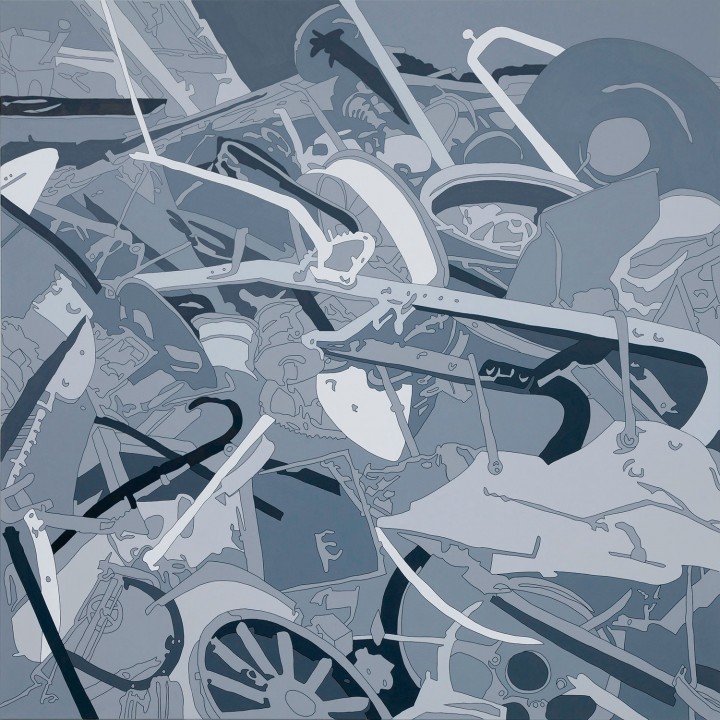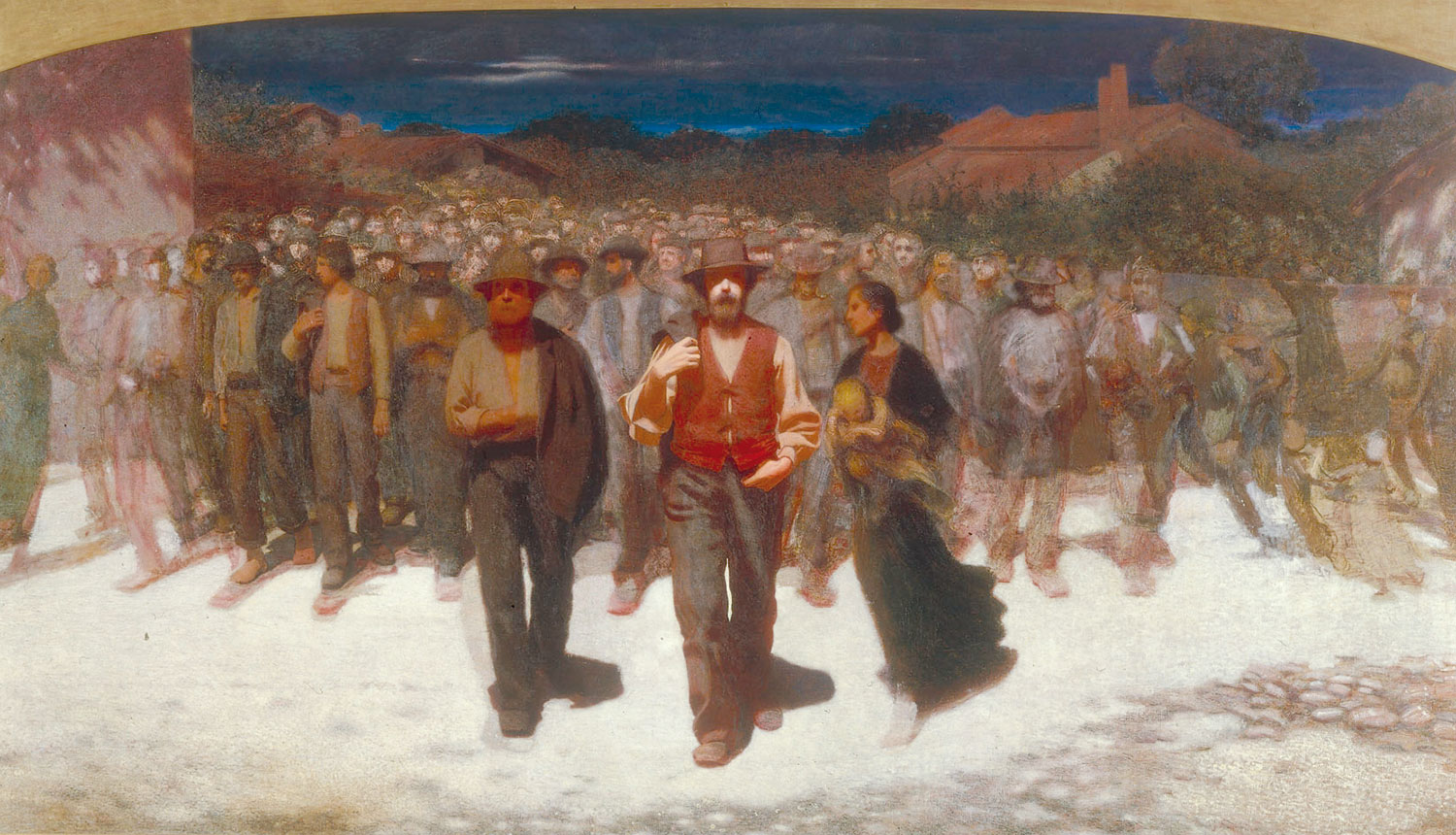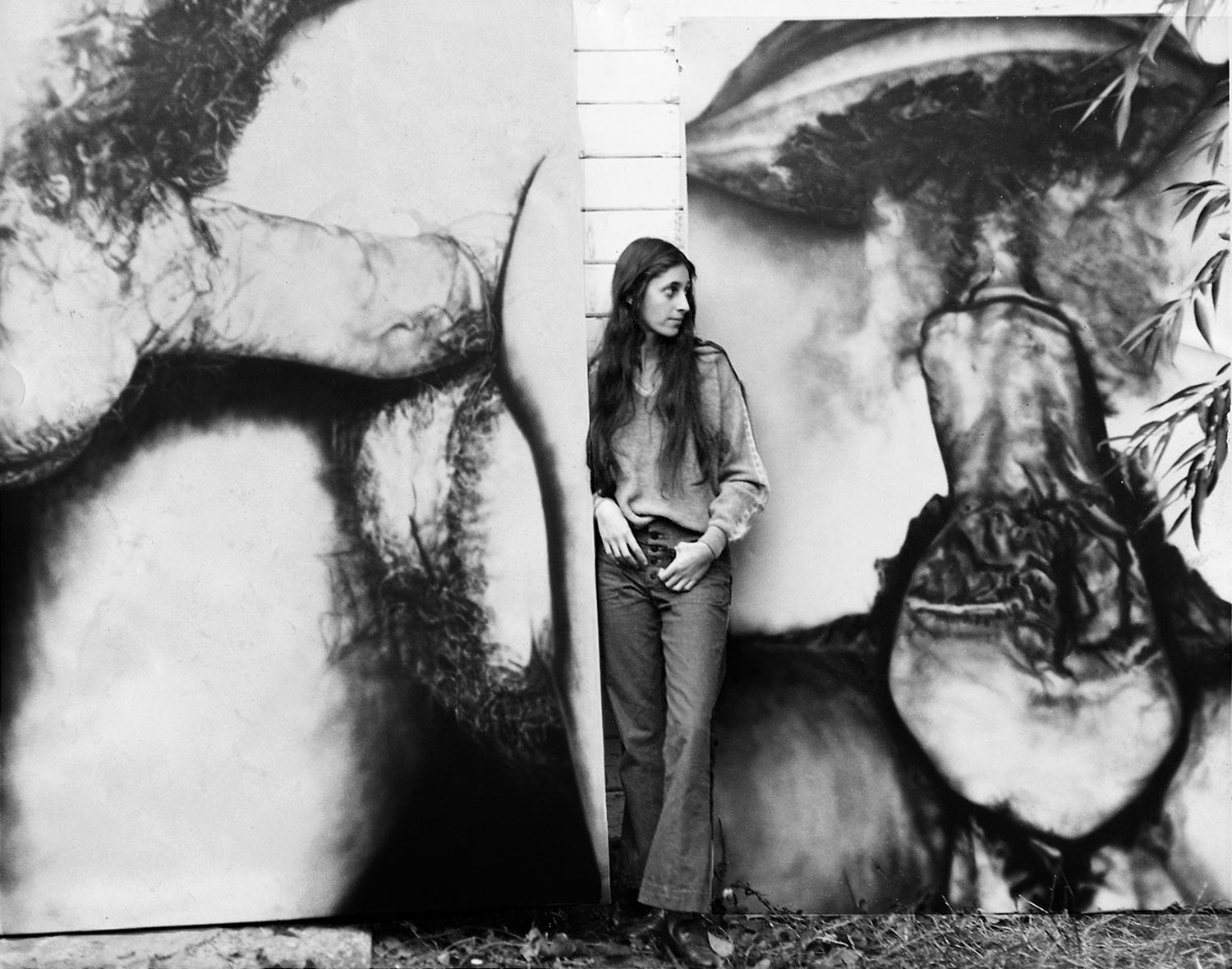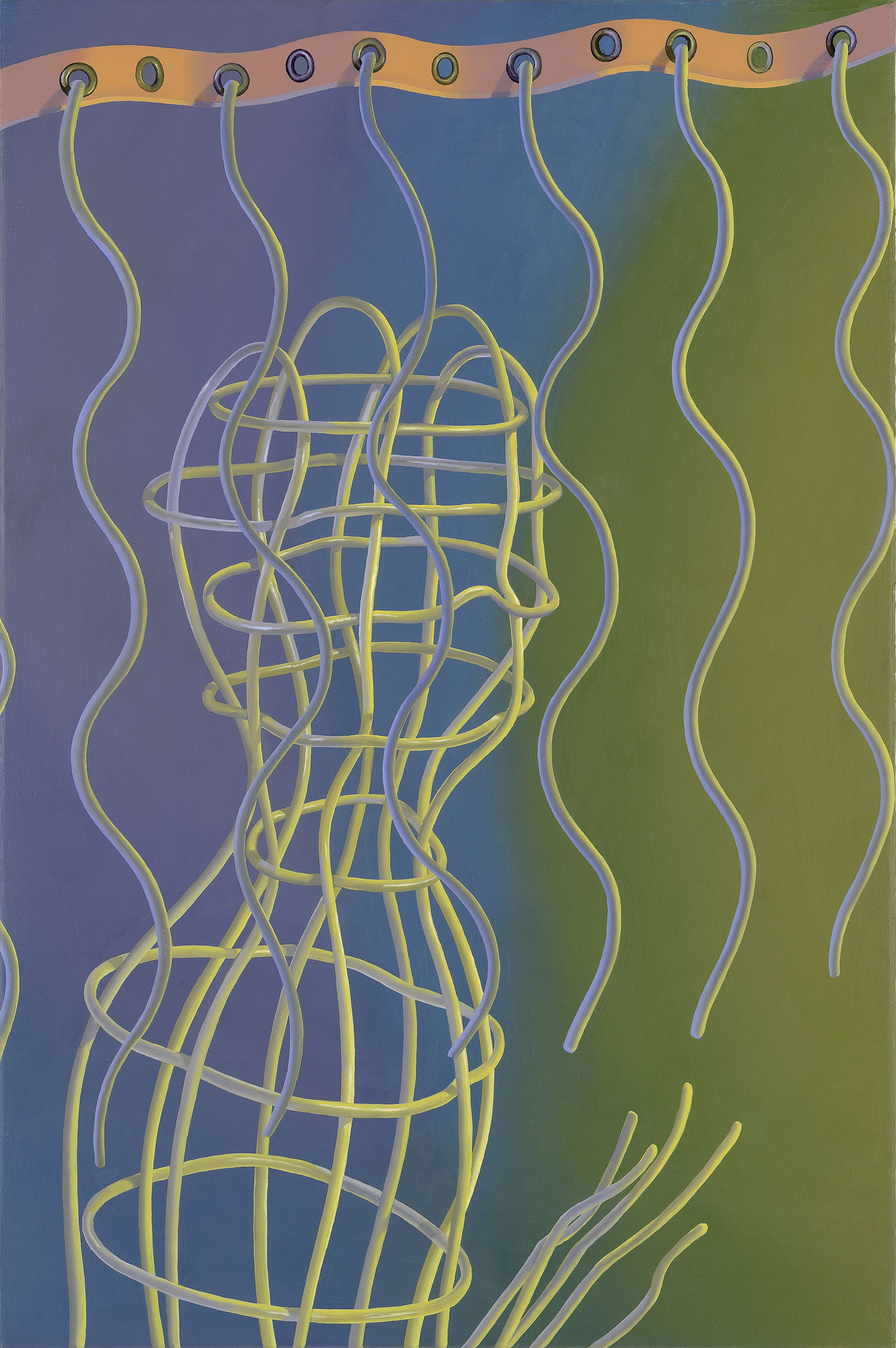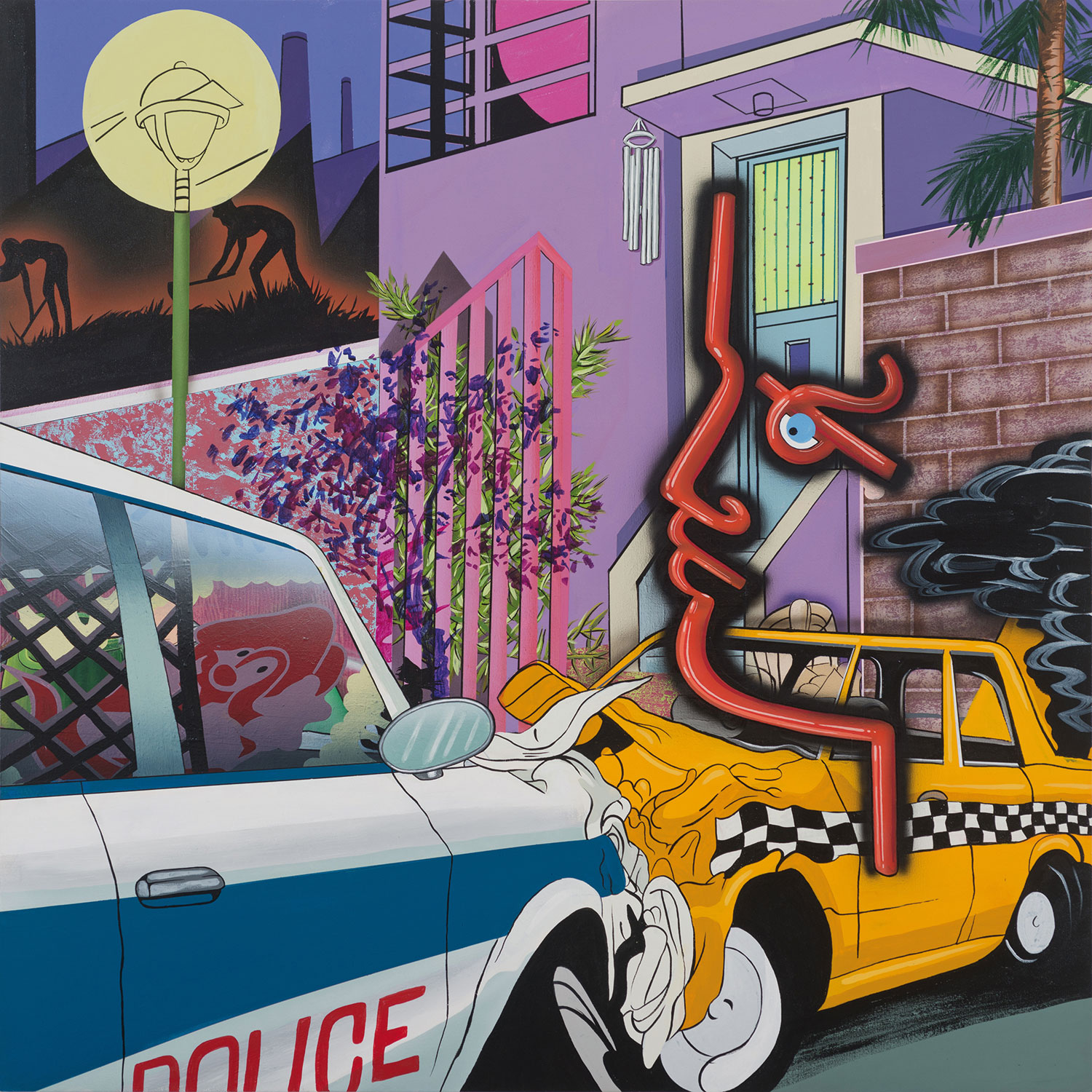
The paintings of Lisa Ruyter (b. 1968, USA; lives in New York) are often described as the collision of Pop art and the artist’s own sensibilities, a synthesis resulting in a subjectivized variety of the genre. However, Ruyter’s interest in photographic archives and the paintings that result should once and for all clarify the above misunderstanding, making it explicit that her work and preoccupations are involved in more complex operations. These works are not about fetishizing the surface of the everyday but instead relate to tectonic shifts in scientific, social and artistic epistemologies dating back to the mid-20th century. It may be that due to the growing presence of data banks, image archives and complex visual interfaces in all aspects of life that we will be able to go back and trace what Ruyter’s work has to some degree always addressed.
The mid-20th century is chosen here as the historical anchor for the conceptual origins of Ruyter’s work not so much to mark the coming into formation of a corresponding historical period, but because a group of events from this period, relating to the histories of science, art and, more importantly, cybernetic theory, provide Ruyter’s paintings with their contextual depth:
- Walter Benjamin’s The Arcades Project, the collaged theory text consisting of hundreds of notes, reflections and images on the city of Paris and its shopping arcades as they related to the history of capitalist development [Cambridge: Belknap Press, 2002];
- Aby Warburg’s anachronistic panels titled Mnemosyne Atlas, which gathered and related hundreds of images borrowed from different sources as a way of breaking the monopoly of language over images by proposing a strictly visual method for understanding the history of art [See: Philippe-Alain Michaud, Aby Warburg and the Image in Motion, New York: Zone, 2006];
- Jules Henri Poincaré’s discovery of chaotic deterministic systems via the dependence of their emergence on seemingly benign initial conditions, which laid the foundations of modern chaos theory [See: Jules Henri Poincaré, “Chance,” in James R. Newman, ed., The World of Mathematics, 1956, pp. 1380–1394];
- The revolutionary transformation of museology from taxonomy to visual studies that accompanied the creation of vast photographic and image archives as the basis for both understanding the world and its display in various accessible systems like archives and museums of science, nature and anthropology [See: Tony Bennett, “The Exhibitionary Complex,” in New Formations 4, spring 1988, pp. 73–102];
- The Macy Conferences on cybernetics (1946–1953) in which a host of scientists and scholars, including Norbert Weiner, Heinz von Foerster, John von Neumann and Gregory Bateson, contributed to the interdisciplinary study of mechanical, physical, biological, cognitive and social systems and their relevance for unifying communication and control between humans and machines.
How these seemingly unrelated events apply to Ruyter’s new body of work can be made explicit if we take a closer look at the artist’s recent solo exhibition “Let Us Now Praise Famous Men” at Eleven Rivington Gallery, New York. I am in particular referring to a series of four paintings based on photographs from the archives of the Farm Security Administration/War Information Office (FSA/WIO) housed in the Library of Congress. These paintings include a single grayscale canvas that due to its chromatic verisimilitude with the photographic source material demonstrates in a visual form what the exhibition as a whole encapsulates conceptually.

The painting, titled John Collier: Fort Kent, Maine (vicinity). Salvage drive for scrap metal at 4:30 p.m., is based on a single photograph from a series of pictures taken by John Collier of chaotic heaps of scrap metal and debris at Fort Kent, Maine, in August of 1941. Compared to the rest of the pictures taken by the photographer during this particular field trip, which consist of straightforward documentary shots of people and places, this photograph and about a half a dozen similarly titled others seem to have been composed with a different kind of effect in mind. Considering that Collier is best known for abandoning his job as a photographer in the 1950s to research and write about a new field of visual anthropology, one can assume that these few images are among the elements that foreshadow his later understanding of photography as something more than a collection of images, both as a new tool and a method for gathering, configuring and sharing knowledge about the complex order of the seemingly chaotic world of humans. Thus, at the photographic level, the image documents the bedlam of economic depression and war as well as their inevitable coupling in a town known in American history for being the scene of the Aroostook War, a border dispute with England in the mid-19th century. The photograph’s lack of any human subject or functioning technology fascinatingly foreshadows not only the destructive aspect of World War II but the kind of physical, environmental and psychological wreckage associated with later developments in America, notably globalization and the rise of networked society. To explicitly illustrate the connection between depression and war, Collier also documents the scene behind the heap of scrap metal in another photograph from the series in which four young men pack scrap metal into a truck with a hand-painted billboard that reads, “Give us your scraps to throw at the Japs.” What’s at the heart of the relationship between chaos and order as the yin and yang of 20th-century capitalism is not the exclusive essentiality of either of these two forms to the identity of the dominant political economy but their simultaneous management through complex and interconnected feedback loops and communicational systems that run from nature to economy and culture. As Frederick Hayek, the assumed godfather of neoliberalism, claims, “[w]e must preserve that indispensable matrix of the uncontrolled and non-rational which is the only environment wherein reason can grow and operate effectively” [The Constitution of Liberty, Chicago: University of Chicago Press, 1978, p. 61].
What I would like to suggest here is that if Collier’s photograph in this series can be categorized as an ur-form of visual anthropology, Ruyter’s painting can then be situated oppositionally in what Bernard Stiegler has recently categorized as the “entropological” [“Escaping the Anthropocene,” Durham University, 2015]. Ruyter’s accomplishment in John Collier: Fort Kent, Maine (vicinity) extends beyond simply abstracting Collier’s chaotic photography via her signature flattening effect through paint, and choosing an even closer crop of the image that in effect removes the picture’s reference to the earth and horizon seen at the top of the original image. We also must consider how her tonal reductionism highlights the mechanisms with which the human bottleneck of knowledge flattens the world in order to fit it in a scaled-down picture compatible with the biological code of our epistemic myopia.

In terms of its relationship to photography, Ruyter’s work should be considered in opposition to a triangle defined by the works of Jeff Wall, Sherrie Levine and Richard Estes. In other words, if Wall can be said to paint with his camera, Estes to take pictures with paint, and Levine to create art using various realism-generating apparatuses, then Ruyter remains external to this triangle by declaring herself — as the title of one of her previous exhibitions suggests — a camera. This, in my opinion, rescues her work from the kind of inconsequentiality associated with research-based contemporary art, setting it aside as a genuine form of non-phenomenological photography.
It should be clear by now that in the age that we are passing though, which is marked by environmental catastrophe, planetary computation, multiregional military conflicts and abrasive economic globalization, our cybernetic apparatuses, from the invention of language onwards, have been working hand in hand with our theormodynamic technologies in a process of natural, economic and cultural entropy. In this particular instance of contemporaneity, Ruyter’s painting can be seen as a novel form of visual negentropy — a function far from another doubling of that of the photographer, the archivist or even the contemporary artist. By retracing these archival objects, which already have been subject to systems of order, chaos and reclassification in their past lives and are now part of the larger world of data dissemination in a global scheme of attentional entropy via the Internet, Ruyter’s paintings accomplish something different altogether. They successfully downgrade the status of archives — let alone art itself — as adequate objects of history or knowledge.

